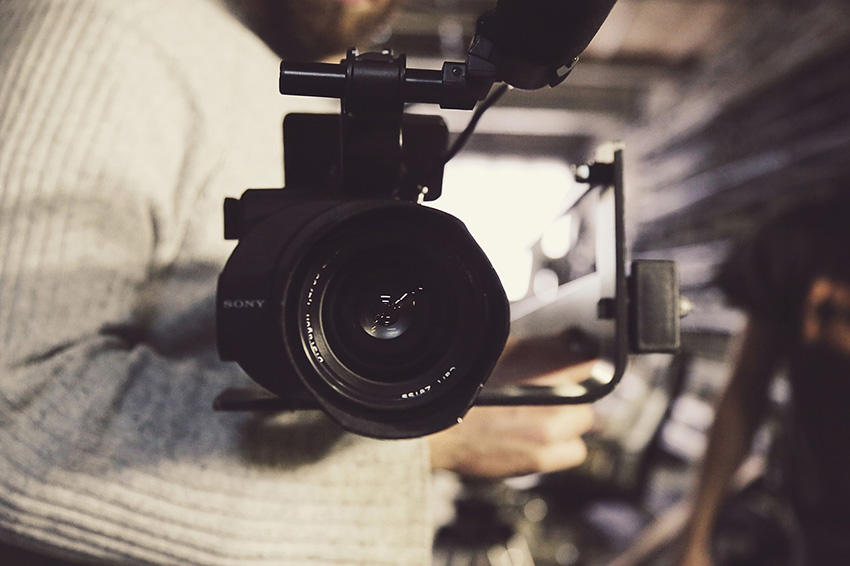< Back to all posts
4K Video: Does Your Business Really Need It?
In this article, we will discuss 4K video. By landing on this article, it’s clear that you have an understanding of the importance of video marketing in your business. Video marketing is one of today’s most powerful ways to promote your products and services within the world of digital marketing.
But are you maximizing your video marketing efforts, or are you leaving something on the table?
For marketing strategists looking to upgrade their content, 4K video has become extremely popular for consumer markets. But does your business need to implement 4K video into your video marketing strategy?
In this article, we’ll take a look at the importance of consistent and effective video marketing in 4K, and why your business needs to start embracing it sooner rather than later.
Let’s take a look.
What is 4K Video?

Without getting into too much of the boring specs and details of 4K, it’s good to have a general understanding of what exactly 4K is.
Simply stated, 4K is one of two possible Ultra High Definition (UHD) resolutions. These are:
- 3840 x 2160 pixels or
- 4096 x 2160 pixels
You’re probably familiar with what’s known as 1080p standard HD resolution, which is 1920 x 1080 pixels. 4K is four times the pixel resolution as 1080p and double the line resolution.
Additional HD resolutions currently used are 1080i and 720p. These two resolutions are typically used in lesser expensive large screen TVs.
4K video resolution is the best possible HD quality you can get. It’s typically used in digital cinema at 4096 x 2160. Commercially speaking, it’s typically referred to as UHD or Ultra HD. It’s becoming more established every day in the landscape of home theater and consumer use using a 3840 x 2160 pixel selection.
Ultra HD (UHD) can also be referred to in pro settings as simply 4K x 2K, 4k Ultra High Definition, Ultra High Definition, Quad Resolution, Quad High Definition, Quad Full High Definition, UFHD, 2160p, or UD.
All of these terms refer to 4K video resolution. Just remember with 4K video, you’re getting a crisper image with brighter colors.
The Power of Video Marketing
Now that you have a more detailed understanding of what 4K video is, let’s take a look at the overall power of video marketing for your business. Then we’ll break down the reasons why it’s time to move your video marketing into the 4K stratosphere.
Video marketing is a worthwhile investment and one of the most powerful ways to market your products and services for several reasons. 54% of consumers want to see more video content from a brand they support, according to this study.
Sometimes video marketing requires very little investment. Peer-to-peer platforms like YouTube and social media are completely free to use (in their basic forms) and allow you to post video content about your business that can reach millions of people without spending a single dollar on advertising.
Paid advertising is also available on these platforms as well, but to put out quality corporate video content on popular mediums like YouTube, the costs can be major. But so can the benefits.
Consumers love seeing videos of brands they like on social media and studies show the average user will spend 88% more time on a website with video.
Video marketing will continue to expand as a profitable ROI to reach customers and bring brand awareness to a company. But just because there are many ways to put out this video content, doesn’t mean it should be just type of video content.

Why 4K Matters
If overall professionalism and being a leader in your field matters, then producing videos in 4K matters.
Today’s consumers are more sophisticated than ever. They can recognize when a business cuts corners or puts out content that isn’t up to the standards that they expect.
Beyond that, televisions are getting larger every year. Standard 1080p HD will look serviceable on screens of up to about 65 inches. Beyond that, and 1080p begins to look grainy and unprofessional.
When you put out videos online or on television, there’s no telling what size screen the viewer is watching your video on. Many new television buyers are going with 70 – 80-inch 4K televisions that require 4K resolution video in order to display to the best of their potential.
4K also allows viewers to sit closer to their television without noticing any pixelation. This is important because many consumers purchase these large 70 or 80-inch televisions for relatively small rooms. Because of the large size of the television, they are sitting close to it by default.
Even on screens smaller than 65 inches, there’s a noticeable difference between 4K and 1080p—especially when viewing from these close distances.
Consumers invest in 4K televisions because they want to watch 4K quality video. If your videos aren’t providing that quality, it doesn’t make a great impression about your business.
As you can see, 4K really does matter.
How to Get Started Recording in 4K
While it’s possible to record 4K video with the newest iPhones, it’s best to invest some money into a high-powered 4K dedicated video camera to produce professional 4K quality video marketing campaigns.
The cost of a high-quality video camera that will record in 4K range from a few hundred dollars to a few thousand. But you don’t need to drop that amount of money on a new camera you don’t even know how to use.
Here are the top ten professional grade options you can start researching immediately:
- Sony a7S
- Sony PXW-FS7
- Panasonic Lumix DMC-G7
- Canon EOS C300 Mark II
- Sony PXW-FS5
Choose the best 4K camera for your business needs based upon the types of videos you plan to produce, what mediums you choose to upload them to, the frequency of use (durability), and on what platforms you believe your videos will be most viewed on.
4K Is Here to Stay
As with any other technology upgrade, once it has arrived in the consumer market it’s not going to leave. More and more consumers are investing in 4K televisions every day. You can expect that trend to continue throughout the upcoming holiday season.
Transition your video marketing campaigns to 4K to avoid being left behind. If you’re ready to take this step, look no further than Crews Control for your 4K shoot. We’ll connect you with the right production team for your project, no matter where you’re located. If you’re ready to take your video marketing strategy to the next level, reach out today for your free quote.







4k has advantages for cropping and specialFX, blue/green screen, compositing, etc. But the idea that 1080p video looks bad on screens over 65″ is just not true. Consider that huge movie screens still project DCP files at 2k (essentially 1080). The high bit rate is what makes the difference here, with 24p frame rates. There are 6k cameras, and even 8k on the horizon, why stop at 4k? If you’re making theatrical releases maybe there’s an advantage of 4k, 6k, or 8k originated edits masters conformed and projected in a 2k DCP file. But for a large screen television, not so much. And most people are viewing material on tablets, phones, and computers where 1080p is fine.